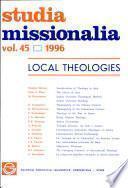
Buscador de ebooks....

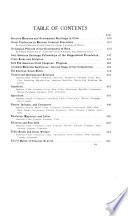
Bulletin of the Pan American Union
Autor: Pan American Union
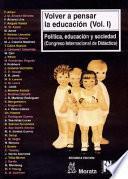
Volver a pensar la educación
Autor: Congreso Internacional De Didáctica
Número de Páginas: 408El eslogan «Volver a pensar la educación» quiere ser la expresión de una necesidad imperiosa para todas aquellas personas relacionadas de distinta forma con las ideas y prácticas educativas que se sienten inseguras desde un punto de vista intelectual, ético y práctico en un mundo cambiante. Personas que no pueden disponer de referentes claros acerca de las formas de desarrollo científico y cultural de los pueblos, de modelos sociales con los que sentirse comprometidas y al servicio de los cuales poner un proyecto educativo coherente. La perplejidad y la incertidumbre son el resultado de apreciar un mundo que muestra cada vez con más crudeza ciertos rasgos de irracionalidad, de desigualdad entre grupos e individuos, así como una injusta distribución de todos los bienes, incluida la educación. Muy diversas circunstancias hacen imprescindible hoy una reflexión sobre la realidad educativa y los fundamentos que le proporcionan sus justificaciones racionales y éticas. ¿En qué consiste lo que puede ser conocimiento relevante en la sociedad actual? ¿Cuáles son los valores que se deben difundir? ¿Qué competencias conviene estimular en ciudadanas y ciudadanos para que...
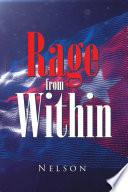
Rage from Within
Autor: ,nelson
Número de Páginas: 268This sensational piece of love and death is totally veridic and shows the cruelty of a slave country by a dictator who without mercy oppress and kill the people from hunger, thirst, and injustice, violating the human rights, taking the Cuban people to suicide through the need and desperation. This book shows the real life of Cuba; it shows how the people is tortured, and without hope that one day they could be free or liberated from the yoke that make them die prematurely through suicide. And each day, the oppression against Cubans’ human rights grow. This book shows the inequality in Cuba compared with other countries that are not slave or ruled by a dictator. This piece is written following the sadness and suffering from Cuba.
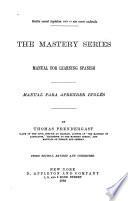
The Mastery Series, Manual for Learning Spanish ...
Autor: Thomas Prendergast
Número de Páginas: 105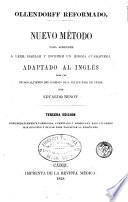
Nuevo método para aprender a leer, hablar y escribir un idioma cualquiera, 1-2
Autor: Eduardo Benot
Número de Páginas: 254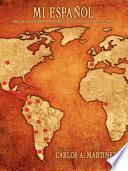
Mi Español
Autor: Carlos A. Martinez
Número de Páginas: 344
Qué pasa
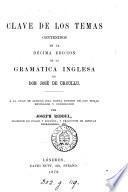
Clave de los temas contenidos en la décima edicion de la Gramática inglesa. À la cual se agrega una nueva ed. de los temas revisados por J. Riddel
Autor: José De Urcullu
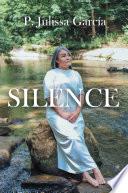
Silence
Autor: P. Julissa Garcia
Número de Páginas: 138SILENCE narrated the importance of paying attention to what we say, but not after having said it, but before. Of the maturity that each stage of our lives must include in the spiritual, work and behavioral spheres. It is the account of traveling through valleys of desolation and deserts caused by the lack of fear. In it, I leave the care of the expressions we use without taking into account the receiver we face and the wisdom we show when we are ready to hear rather than to speak when our words lack the components of love, patience, kindness, maturity, and many times truth. In addition and finally, it was my commitment marked by these lines that we learn to assume with due responsibility, authority and tolerance those assignments for which one day we prayed or that simply surprised us. Learning to say a lot and substantial in SILENCE at the right time and at the perfect time, letting God defend us from the timely response. Blessings, Julissa Garcia.
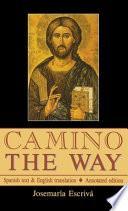
Camino
Autor: Saint José María Escrivá De Balaguer
Número de Páginas: 449First published in 1939, this book is a phenomenon in contemporary spiritual writing. This is a revised annotated bilingual edition, has parallel Spanish and English texts.
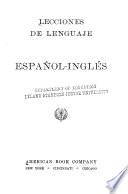
Lecciones de lenguaje español-inglés
Autor: Marcos Moré Del Solar
Número de Páginas: 160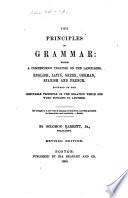
The Principles of Grammar
Autor: Solomon Barrett
Número de Páginas: 236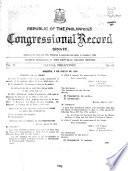
Republic of the Philippines Congressional Record
Autor: Philippines. Congress (1940-1973). Senate
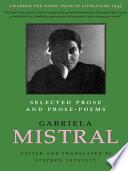
Selected Prose and Prose-Poems
Autor: Gabriela Mistral
Número de Páginas: 262The first Latin American to receive a Nobel Prize for Literature, the Chilean writer Gabriela Mistral (1889-1957) is often characterized as a healing, maternal voice who spoke on behalf of women, indigenous peoples, the disenfranchised, children, and the rural poor. She is that political poet and more: a poet of philosophical meditation, self-consciousness, and daring. This is a book full of surprises and paradoxes. The complexity and structural boldness of these prose-poems, especially the female-erotic prose pieces of her first book, make them an important moment in the history of literary modernism in a tradition that runs from Baudelaire, the North American moderns, and the South American postmodernistas. It's a book that will be eye-opening and informative to the general reader as well as to students of gender studies, cultural studies, literary history, and poetry. This Spanish-English bilingual volume gathers the most famous and representative prose writings of Gabriela Mistral, which have not been as readily available to English-only readers as her poetry. The pieces are grouped into four sections. "Fables, Elegies, and Things of the Earth" includes fifteen of Mistral's...
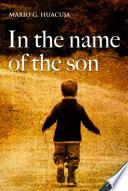
In the name of the son
Through its examination of the relationship between a single inmigrant mother and her son, In the Name of the Son offers a perspective on the lives of hispanic american immigrants, and of the social, political and economic upheavals that shook the U.S. and Mexico at the beginning of the 21st Century. This novel narrates the internal conflict of a Young man trying to ascertain his father ́s identity, who will ultimately uncover the unexpectedly violent and disturbing truth of his origins. His search leads him into a labyrinth full of mirrors, where he finds his own image changing at every step. His journey is also marked by the conflicts that have shaken the world the first years of the 21st century, including the fight against armed extremists, terrorism and the attack that destroyed the Twin Towers in New York City.
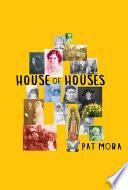
House of Houses
Autor: Pat Mora
Número de Páginas: 322Combining poetic language and the traditions of magic realism to paint a vivid portrait of her family, Pat MoraÕs House of Houses is an unconventional memoir that reads as if every member, death notwithstanding, is in one room talking, laughing, and crying. In a salute to the Day of the Dead, the story begins with a visit to the cemetery in which all of her deceased relatives come alive to share stories of the family, literally bringing the food to their own funerals. From there the book covers a year in the life of her clan, revealing the personalities and events that Mora herself so desperately yearns to know and understand. ÒPoet MoraÕs complex and dramatic family history comprises more than personal reminiscences: it also embraces resonant aspects of Mexican American history. Mora recounts her familyÕs traumatic exodus from Mexico to escape the violence of Pancho Villa and his forces and their struggles to begin new lives in another country. To anchor her psychologically rich, dramatic, sometimes funny, often touching multigenerational tale, Mora uses the image of a houseÑthe house of housesÑduring a single year, a fruitful metaphor that allows her to dwell on the bright ...
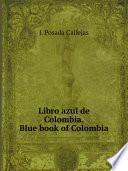
Libro azul de Colombia. Blue book of Colombia
Autor: J. Posada Callejas
Libro azul de Colombia. Blue book of Colombia. Bosquejos biograficos de los personajes mas eminentes. Biographical sketches of the most prominent personages. Historia condensada de la republica. Abridged history of the republic. Articulos especiales sobre el Comercio, Agricultura y Riqueza Mineral, basados en las Estadisticas Oficiales. Special articles relative to Commerce, Agriculture and Mineral Wealth, based on Official Statistics.

Aula Orientalis
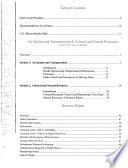
Report of the Good Neighbor Environmental Board to the President and Congress of the United States
Autor: United States. Good Neighbor Environmental Board
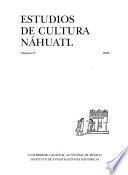
Estudios de cultura náhuatl
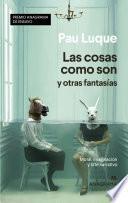
Las cosas como son y otras fantasías
Autor: Pau Luque
Número de Páginas: 256Un libro inteligente y ágil, que profundiza en las complejas relaciones entre moral y ficción, que vuelven a estar –o acaso nunca han dejado de estarlo– en el centro del debate. ¿Hay arte moralmente condenable? ¿O es el arte inmune al juicio moral? Las respuestas más socorridas que se ofrecen en la esfera pública a estas cuestiones parecen acorralarnos para que elijamos entre las opciones de un solemne dilema. O bien se reclama la suspensión total del juicio moral acerca de la obra de arte o bien se mimetiza el veredicto propio del derecho penal: culpable o inocente. En este ensayo, Pau Luque sostiene que ese es un falso dilema. El juicio moral es más complejo y desordenado de lo que esas dos posiciones dan a entender. La obra de Nick Cave, la Lolita de Nabokov y El mar, el mar, de Iris Murdoch, hilos conductores de este libro, sugieren que el juicio moral más fecundo es el que se encarama a la imaginación literaria, no aquel que busca la absolución o la condena. Al mismo tiempo, y sobre la base de la comparación entre las escenas clave de Irreversible de Gaspar Noé y La pianista de Michael Haneke, tiene sentido hablar de arte moralmente indecente. La diferencia...
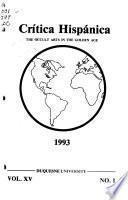
Crítica Hispánica
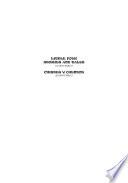
Little Folk Stories and Tales by Don Pablo
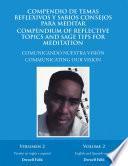
Compendio De Temas Reflexivos Y Sabios Consejos Para Meditar. Compendium of Reflective Topics and Sage Tips for Meditation
Autor: Derwell Fallú
Número de Páginas: 134Esta gran obra artística literaria, es la compilación enmarcada, de la esencia de un contenido, que es el resultado de la interacción entre el divino creador del universo, y el autor de este proyecto, así como, la experiencia continua y personalizada con el asiduo lector, siendo éstas, las fuentes de enlaces, que han servido para la inspiración que hizo posible este libro. Como lo indica su nombre, el extracto del contenido de este proyecto es el volumen 2, versón inglés y español, es un compendio de temas, que como resultado de la experiencia, experimentada con lo divino y lo humano, sabemos que puede satisfacer las necesidades del lector más exigente. Así que, no hay lugar para la duda, será de gran bendición para todo lector, por tanto. Es una herramienta que no debería faltar en ningún hogar.
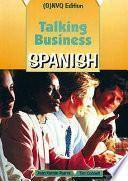
Talking Business Spanish
Autor: Juan Kattán-ibarra , Tim Connell
Número de Páginas: 198This is part of a series which covers the NVQ and GNVQ language options in Business, and Leisure & Tourism, and is available in French, German and Spanish. Each course comprises a student book, a resource and assessment file, two presentation cassettes and two consolidation cassettes. End-of-unit progress checks are cross-matched with NVQ criteria for assessment in reading, speaking and writing, and each of the resource files contains photocopiable worksheets and a cassette for preparation and assessment in all four skills.

El Porteño
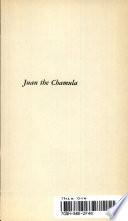
Juan the Chamula
Autor: Ricardo Pozas
Número de Páginas: 115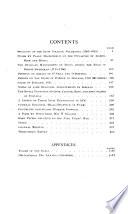
Archivium Hibernicum
Ver más detalles